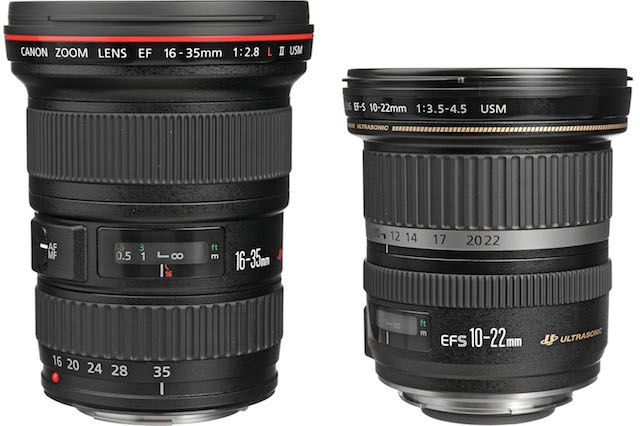Many people wonder what the difference is between Canon EF and EF-S targets. In this trick, you will know the characteristics of these lenses designed for the range of DSLR cameras.
The first thing to know here is that among the different Canon camera models, there are two types of sensors: the larger, called Full-Frame, and the smaller one, called APS-C. If you have any questions about it, take a look at this sensor tip.
- Basically.
- It can be said that EF-S lenses were designed to work on cameras with APS-C sensor and that EF lenses were developed for APS-C and full format.
Because the APS-C sensor is 60% smaller than the entire frame, you need a smaller image projected through the lens. In this way, Canon EF-S lenses are built with smaller and simpler optical elements. These particularities make these objectives lighter and more accessible, as is the case with the Canon EF-S 10-18MM F4. 5-5. 6 IS STM.
To improve the convenience, affordability and size of EF-S lenses, Canon has created the EF-S lens, a standard that accepts EF-S and EF lenses and is present in APS-C sensor cameras such as Canon cameras. EOS Rebel T5i , EOS Rebel T6i, EOS Rebel T7i and EOS 70D, for example.
To identify the EF-S pattern, simply look at the colored dots on the nozzle: the red sign represents compatibility with EF lenses and the small white square indicates acceptance of EF-S lenses. Respectively, these signals are also found in the body of the lenses to which they refer.
Full-size cameras, which have a sensor similar to the size of the 35mm film, need a larger image projection to fill their entire area. To meet this demand, companies have larger optical elements.
Most EF lenses have higher aperture diaphragms, which makes them brighter. The construction is more robust and the projected image has more clarity.
An example that belongs to the EF lens category is the Canon EF 16-35 mm F/4L IS USM, a lens widely used by photographers. Full-size sensor cameras include EOS 1D, EOS 5D, EOS 5Ds, EOS 5Ds, EOS 5D R and EOS 6D.
Using EF lenses in APS-C cameras
The operation in this case will be perfect. Because the image projected by the lens will be larger than the sensor, only part of the image will be recorded.
It’s as if the photo taken with a full-size sensor has bent or hidden edges. The remaining area of the image corresponds to the capture capability of the APS-C sensor. This effect is called a cutting factor. See the example below.
The APS-C sensor, called trimming, records a smaller portion of the image generated by the lens. The 1. 6x trimming factor makes a 50 mm lens, for example, equivalent to an 80 mm (50 x 1. 6-80) lens. the lens, which maintains the same focal length, but thanks to the sensor, which only captures part of the image generated by the lens.
Important: Note that the focal length of the lens will always be multiplied by 1. 6 times when used on APS-C cameras. This happens when using EF and EF-S lenses, because the focal length shown on the lens always refers to the full format standard.
In other words, a camera with APS-C sensor with canon EF-S 10-18 mm F4. 5-5. 6 IS STM lens, for example, will have a viewing angle similar to 16-29 mm in a full frame digital camera.
In fact, the reduction factor can be an advantage in some situations. Let’s say you need to capture subjects from long distances. By using the crop factor in your favor, your camera will be able to capture these images in more detail, using the ?Expansion? From the lens thanks to the cutting factor.
It is very important to note that EF-S lenses were not originally suitable for cameras equipped with the full-size sensor, as they have a different construction than the acceptable one of these models and allow less light to pass to the sensor.
?????????????
Regardless of your preferred standard, Canon offers lenses that meet all framing, blur, clarity, and more. Everything will always be associated with the conditions of each photographer and with what images we want to capture.

